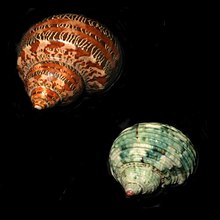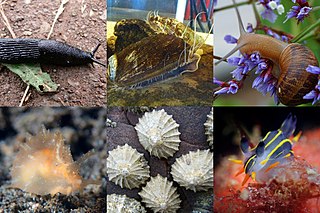
Gastropods, commonly known as slugs and snails, belong to a large taxonomic class of invertebrates within the phylum Mollusca called Gastropoda.
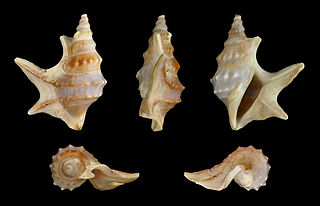
Mesogastropoda was for many years a traditional taxonomic group of snails, an order. The order was composed mostly of sea snails, but it also included some land snails and freshwater snails, all of which were prosobranch gastropod mollusks.
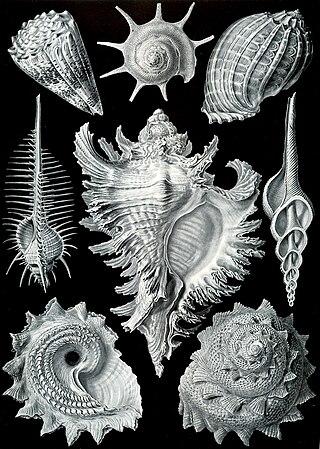
Prosobranchia was a large taxonomic subclass of sea snails, land snails and freshwater snails. This taxon of gastropods dates back to the 1920s. It has however been proven to be polyphyletic. Generally speaking in biology taxonomy is required to reflect phylogeny, in other words the classification of a group must reflect its evolutionary descent, as far as that is known, so the taxon Prosobranchia is no longer considered suitable to be used.

Orthogastropoda was a major taxonomic grouping of snails and slugs, an extremely large subclass within the huge class Gastropoda according to the older taxonomy of the Gastropoda.

Pulmonata or pulmonates is an informal group of snails and slugs characterized by the ability to breathe air, by virtue of having a pallial lung instead of a gill, or gills. The group includes many land and freshwater families, and several marine families.

Caenogastropoda is a taxonomic subclass of molluscs in the class Gastropoda. It is a large diverse group which are mostly sea snails and other marine gastropod mollusks, but also includes some freshwater snails and some land snails. The subclass is the most diverse and ecologically successful of the gastropods.

The Bellerophontida is a taxonomic order of extinct marine mollusks that are found in the fossil record from the Lower Cambrian to the Lower Triassic. They are considered by some experts to be primitive sea snails with primarily symmetrically coiled shells, marine gastropod mollusks.

Stylommatophora is an order of air-breathing land snails and slugs, terrestrial pulmonate gastropod molluscs. This taxon includes most land snails and slugs. Stylommatophorans lack an operculum, but some close their shell apertures with temporary "operculum" (epiphragm) made of calcified mucus. They have two pairs of retractile tentacles, the upper pair of which bears eyes on the tentacle tips. All stylommatophorans are hermaphrodites.

Neritopsoidea is a taxonomic grouping, a superfamily of sea snails, marine gastropod mollusks in the clade Cycloneritimorpha, within the clade Neritimorpha,, or in the order Neritoina within superorder Cycloneritimorpha within the subclass Neritimorpha,.
The taxonomy of the Gastropoda as it was revised in 2005 by Philippe Bouchet and Jean-Pierre Rocroi is a system for the scientific classification of gastropod mollusks. The paper setting out this taxonomy was published in the journal Malacologia. The system encompasses both living and extinct groups, as well as some fossils whose classification as gastropods is uncertain.
The taxonomy of the Gastropoda, as revised by Winston Ponder and David R. Lindberg in 1997, is an older taxonomy of the class Gastropoda, the class of molluscs consisting of all snails and slugs. The full name of the work in which this taxonomy was published is Towards a phylogeny of gastropod molluscs: an analysis using morphological characters.

Vetigastropoda is a major taxonomic group of sea snails, marine gastropod mollusks that form a very ancient lineage. Taxonomically the Vetigastropoda are sometimes treated as an order, although they are treated as an unranked clade in Bouchet and Rocroi, 2005.

Neritimorpha is a clade of gastropod molluscs that contains around 2,000 extant species of sea snails, limpets, freshwater snails, land snails and slugs. This clade used to be known as the superorder Neritopsina.

Bellerophontoidea, common name "bellerophonts", is a superfamily of extinct planospirally-coiled globose molluscs. This superfamily is generally included within the Gastropoda, but may instead be a group of monoplacophorans. The taxon first appeared late in the Cambrian and continued until late in the Triassic.
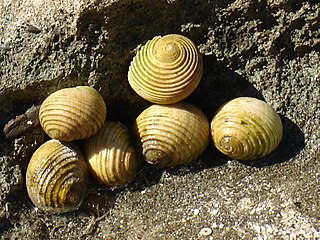
Cycloneritida is an order of land snails, freshwater snails, and sea snails.
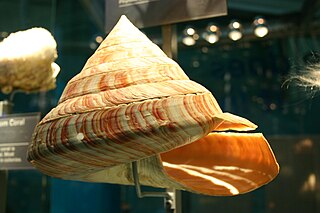
Pleurotomarioidea is a superfamily of small to large marine gastropods included in the order Pleurotomariida of the subclass Vetigastropoda.
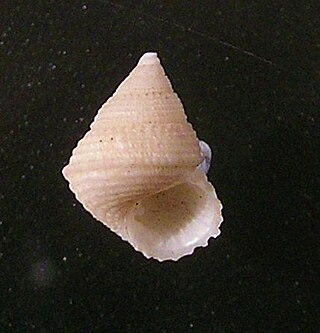
Seguenzioidea is a superfamily of minute to medium-sized sea snails, marine gastropod mollusks in the clade Vetigastropoda.

Hygrophila is a taxonomic superorder of air-breathing freshwater snails, aquatic pulmonate gastropod mollusks within the clade Panpulmonata.
This overview lists proposed changes in the taxonomy of gastropods at the family level and above since 2005, when the taxonomy of the Gastropoda by Bouchet & Rocroi (2005) was published. In other words, these are recent updates in the way various groups of snails and slugs are classified.
The biological systematics and taxonomy of invertebrates as proposed by Richard C. Brusca and Gary J. Brusca in 2003 is a system of classification of invertebrates, as a way to classify animals without backbones.
